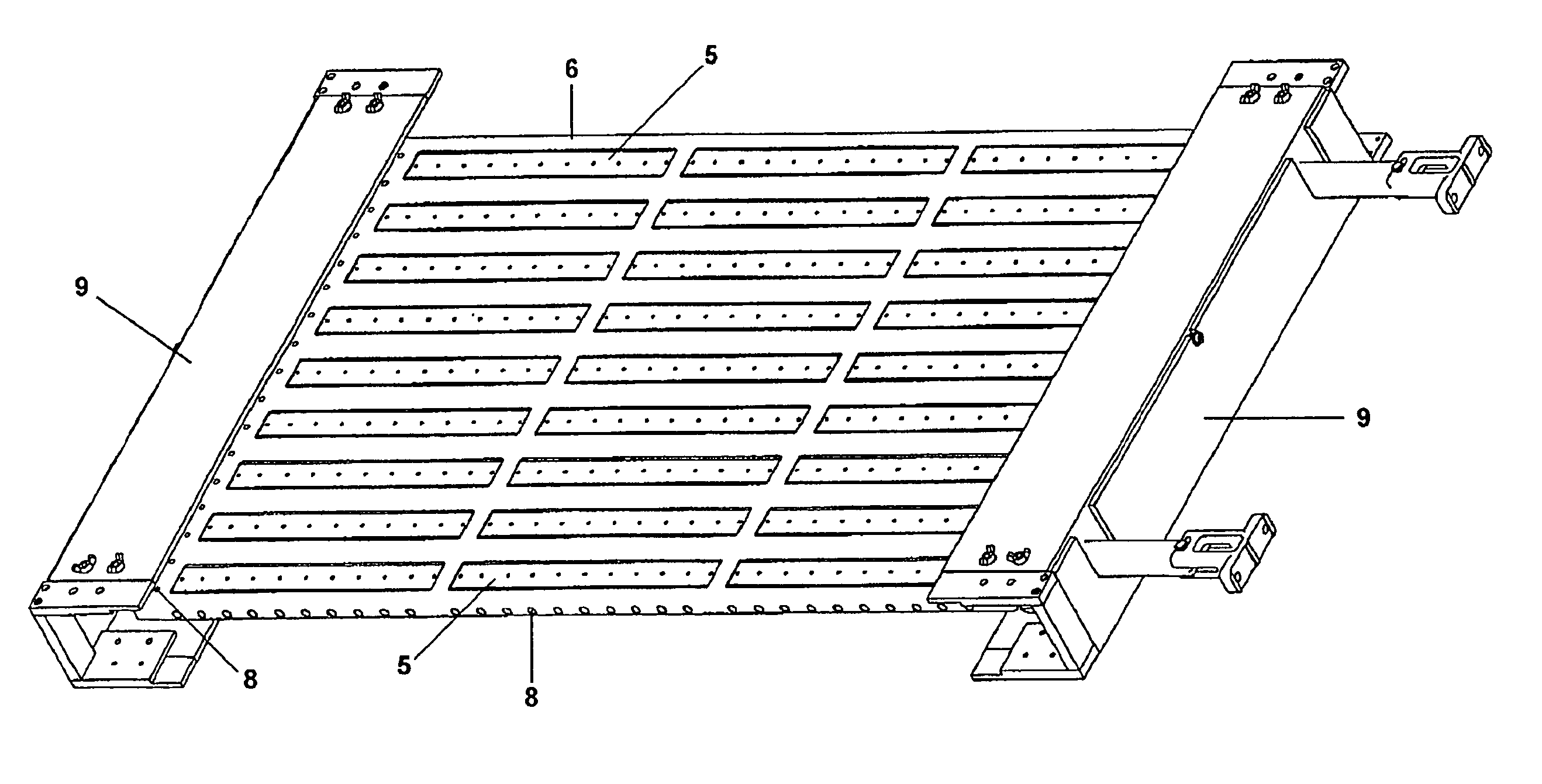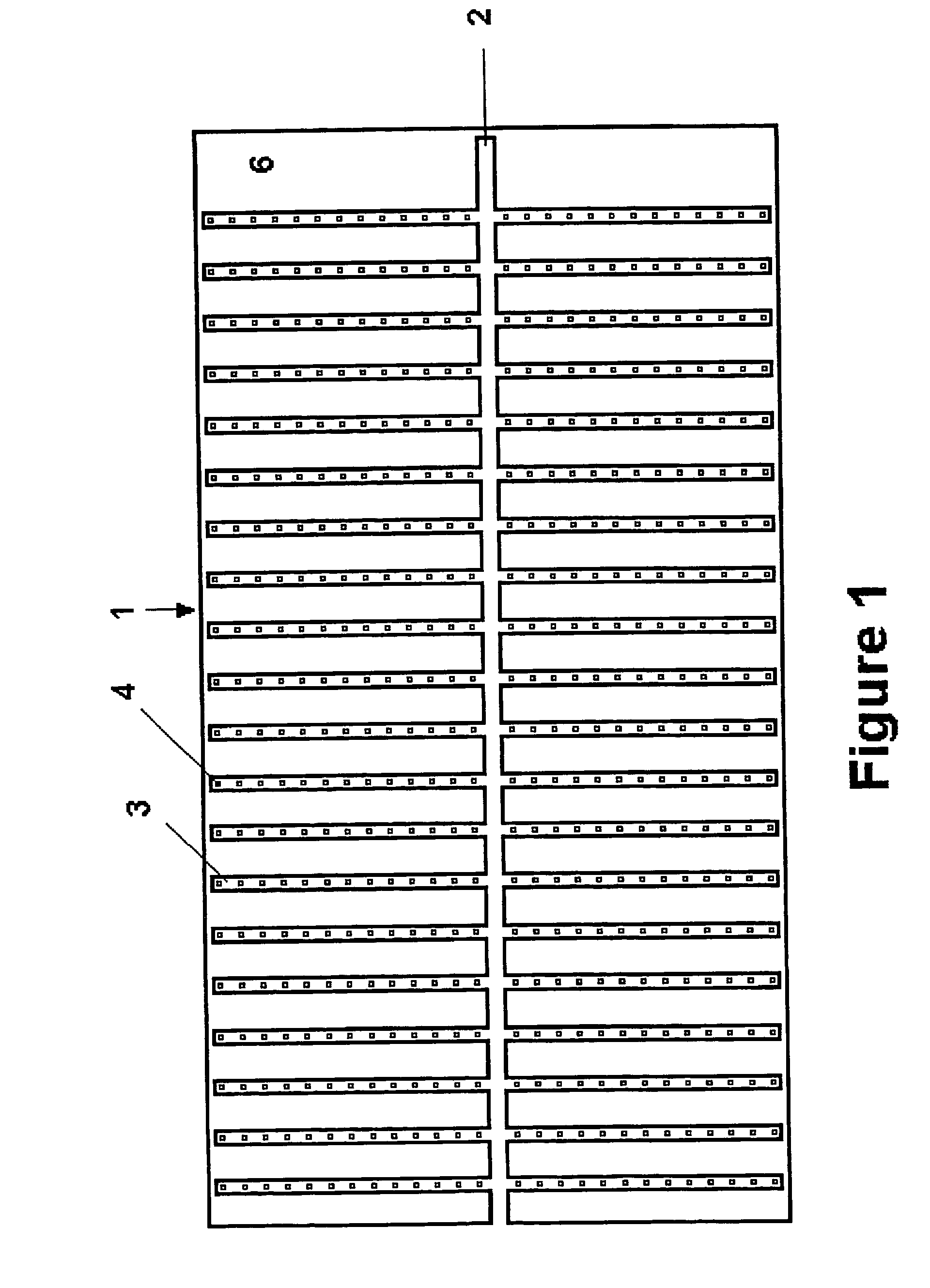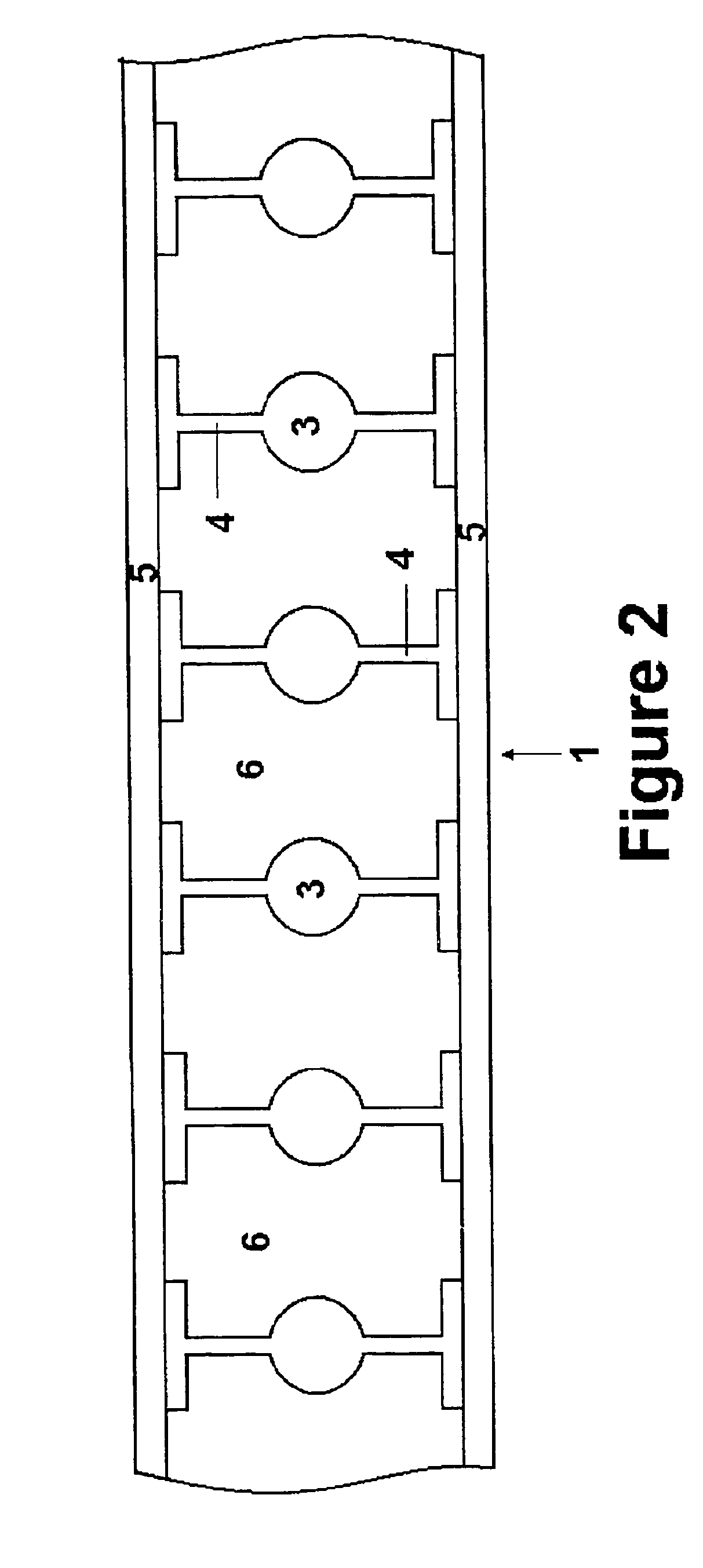Pore cathode for the mass production of photovoltaic devices having increased conversion efficiency
a photovoltaic device and mass production technology, applied in the direction of chemical vapor deposition coating, electric discharge tube, coating, etc., can solve the problems of high energy consumption, high temperature, time-consuming methods, and high cost of crystalline materials, and achieve high-quality photovoltaic semiconductor materials, increase the utilization of process gases, and enhance the effect of continuous deposition of photovoltaic modules
- Summary
- Abstract
- Description
- Claims
- Application Information
AI Technical Summary
Benefits of technology
Problems solved by technology
Method used
Image
Examples
Embodiment Construction
[0029] The present invention relates to a cathode for a deposition chamber for plasma enhanced deposition of large area, thin film semiconductor materials and deposition chambers incorporating such cathodes. Specifically the cathode is a planar pore cathode which serves the dual functions of (1) an electrode for the plasma deposition process and (2) a distribution conduit for the flow of fresh reaction gas to and for the evacuation of the spent reaction gas from the plasma region to maintain a uniform, constant pressure plasma reaction. The cathode is electrically connected to the RF power source. The cathode is preferably vertically mounted and contains gas dispersion plates to prevents direct, line-of-sight, flow of process gases to the adjacent deposition substrate (which acts as the anode in the deposition) and more uniformly distributes the gases flowing into the plasma region between the cathode and the substrate. By providing a relatively large area (which may include a numbe...
PUM
| Property | Measurement | Unit |
|---|---|---|
| Length | aaaaa | aaaaa |
| Length | aaaaa | aaaaa |
| Efficiency | aaaaa | aaaaa |
Abstract
Description
Claims
Application Information
 Login to View More
Login to View More - R&D
- Intellectual Property
- Life Sciences
- Materials
- Tech Scout
- Unparalleled Data Quality
- Higher Quality Content
- 60% Fewer Hallucinations
Browse by: Latest US Patents, China's latest patents, Technical Efficacy Thesaurus, Application Domain, Technology Topic, Popular Technical Reports.
© 2025 PatSnap. All rights reserved.Legal|Privacy policy|Modern Slavery Act Transparency Statement|Sitemap|About US| Contact US: help@patsnap.com



